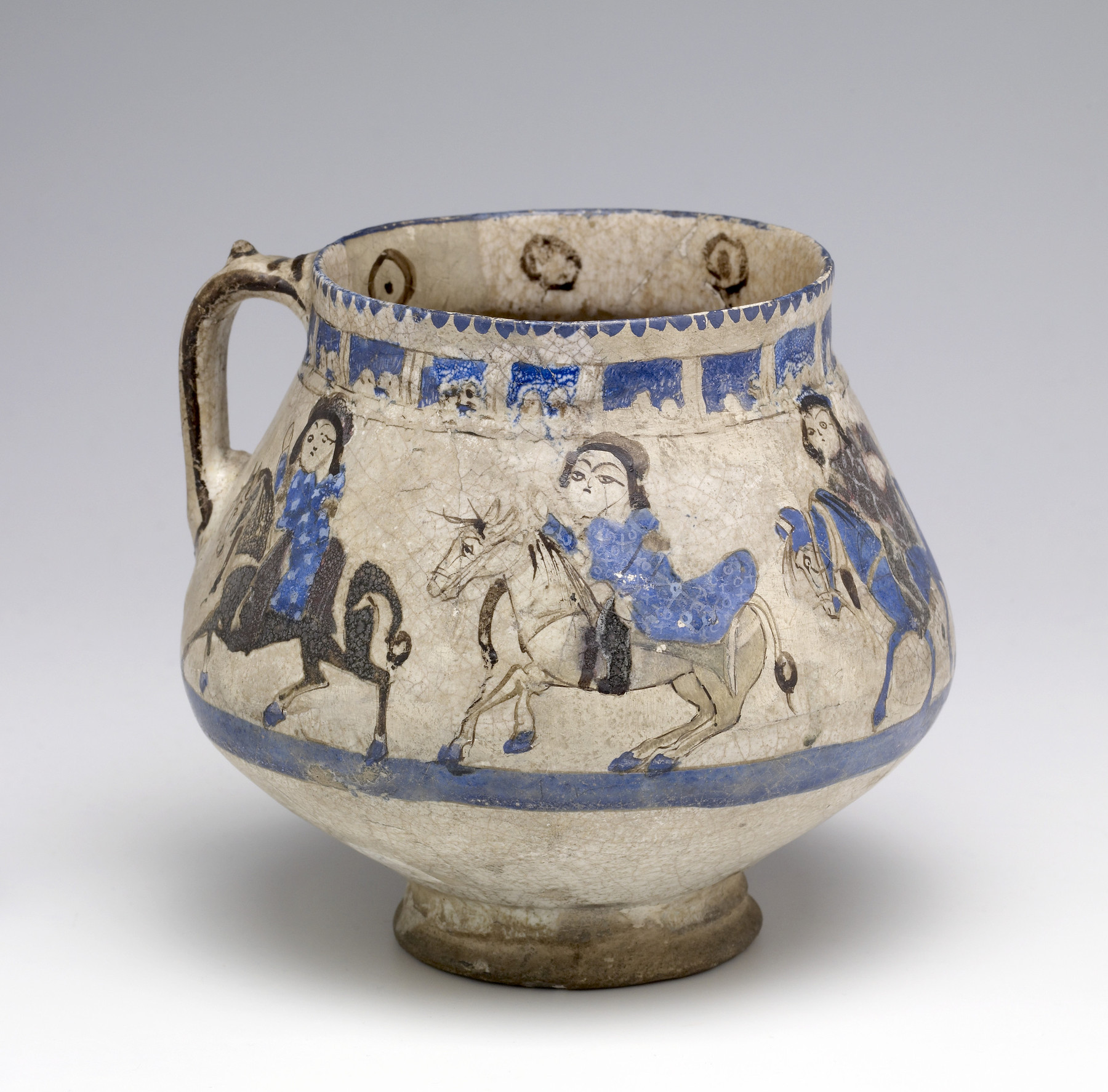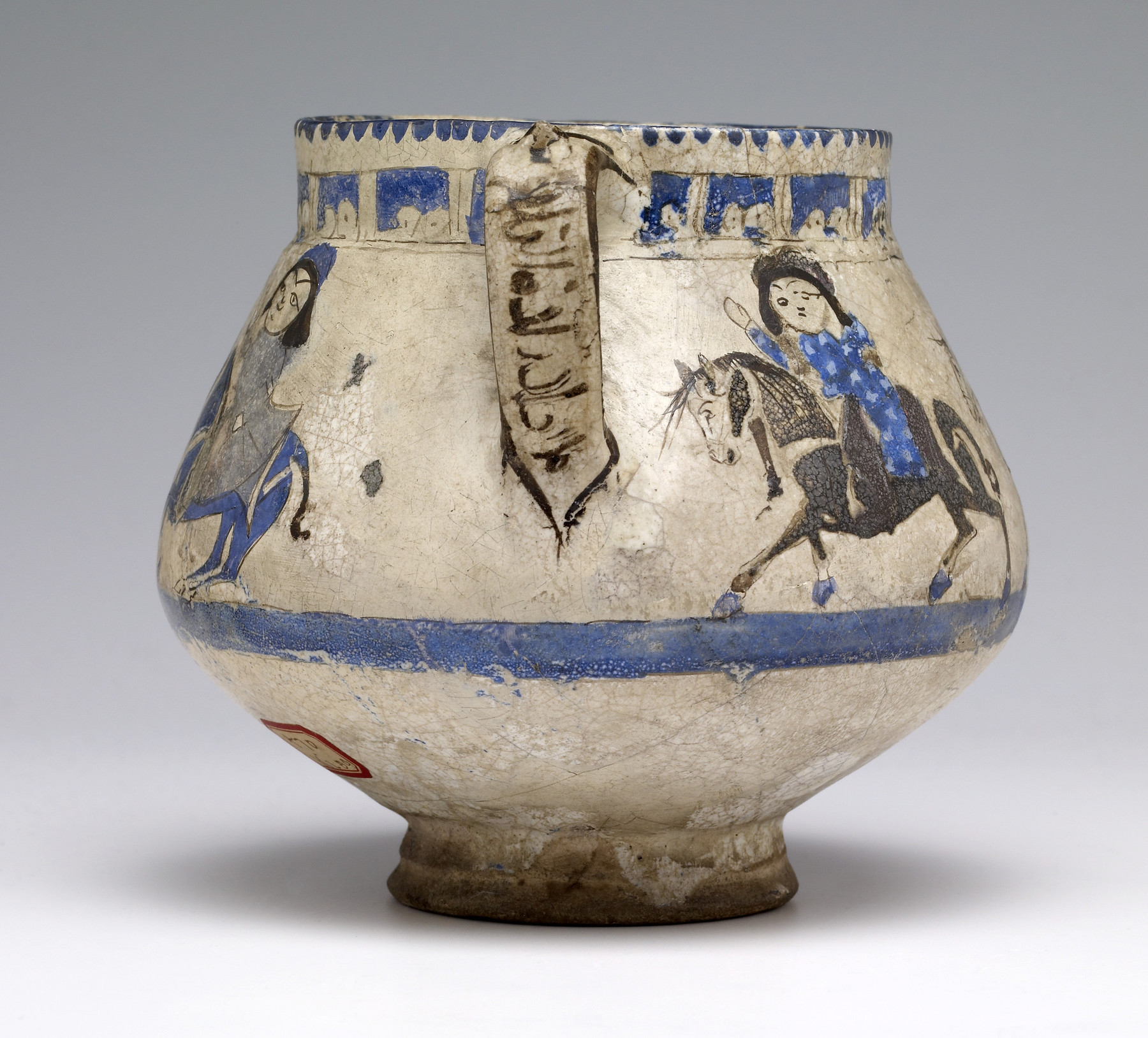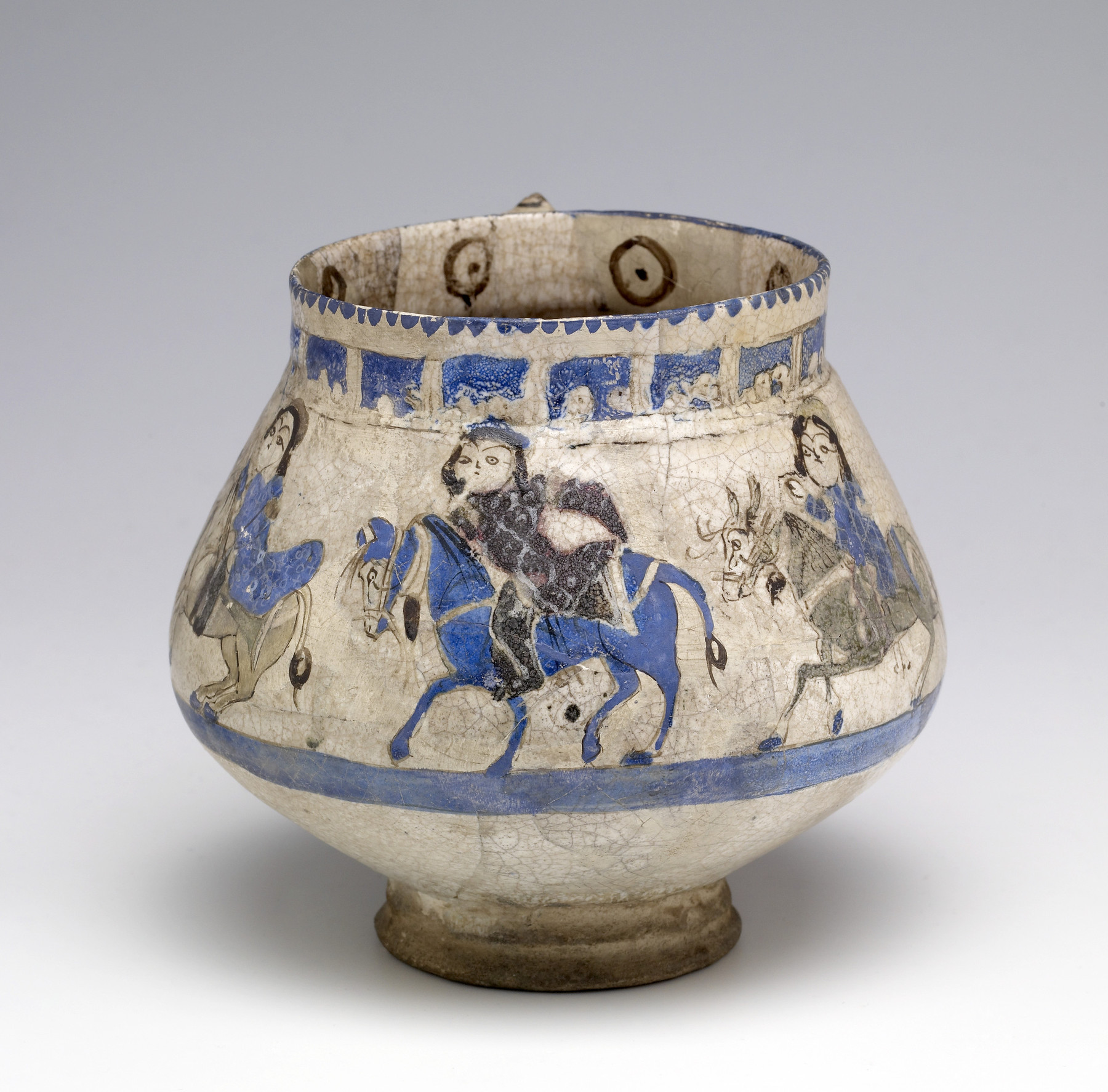Jug with Horsemen and Inscriptions
Mina’i is a modern collectors’ term for ceramics made in Iran during the late 12th to early 13th centuries. The term mina’i, translates as “enamelled” in Persian, designating the colored glass pigments used to paint detailed figural decoration on vessels or tiles, which were then fixed on the ceramic base by multiple firings. The use of a wide range of colors, including turquoise, red, green, purple, and black, also led these types of ceramics to be called by the Persian term “haft rang,” or “seven colors.”
Mina’i ware scenes often depict courtly pursuits, such as feasting, fighting, or poetry and music performances. These colorful compositions created complex narrative scenes which paralleled manuscript painting. The combination of leisurely activities with more warrior-like occupations, such as hunting, was frequently used in the medieval Persian iconography of kingship. This is referred to as bazm wa razm, or feasting and fighting. This jug features five horsemen clad in blue robes. The upper rim of vessel features a white kufic pseudo-inscription against a blue background, whereas a naskhi inscription runs along the exterior of the handle.
Provenance
Provenance (from the French provenir, 'to come from/forth') is the chronology of the ownership, custody, or location of a historical object. Learn more about provenance at the Walters.
Henry Walters, Baltimore, [date and mode of acquisition unknown]; Walters Art Museum, 1931, by bequest.
Geographies
Iran (Place of Origin)
Measurements
H: 4 5/16 × Diam: 4 13/16 in. (11 × 12.3 cm)
Credit Line
Acquired by Henry Walters, by 1931
Location in Museum
Not on view
Accession Number
In libraries, galleries, museums, and archives, an accession number is a unique identifier assigned to each object in the collection.
In libraries, galleries, museums, and archives, an accession number is a unique identifier assigned to each object in the collection.
48.1101












